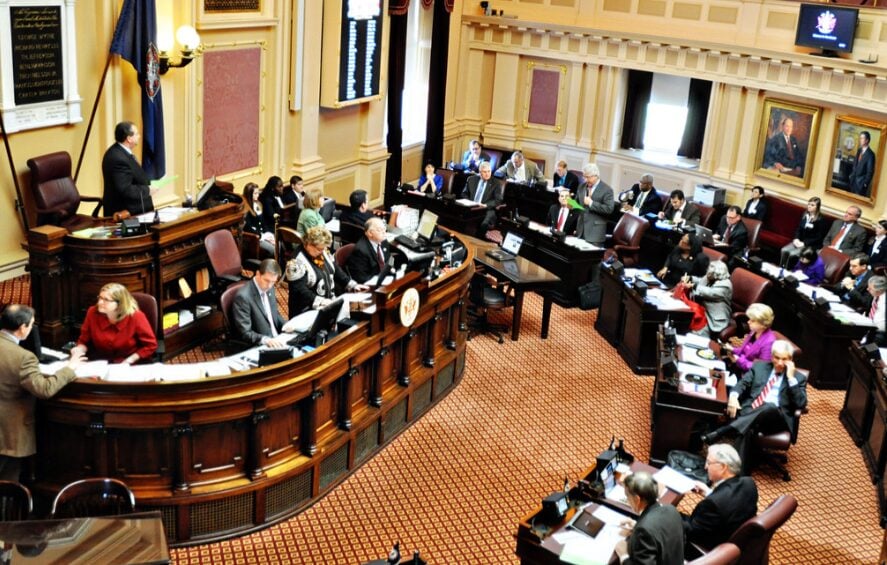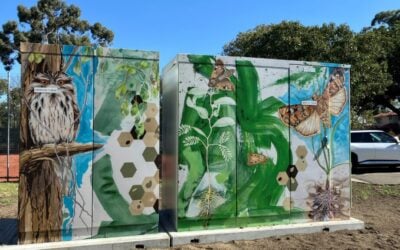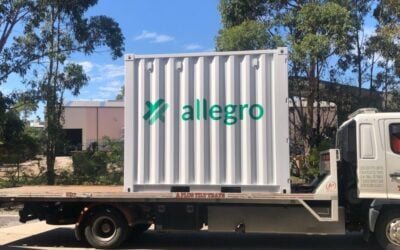
The Virginia General Assembly has passed legislation to promote new energy storage investments by the US state’s two main utilities.
HB2537 introduced by Richard C. “Rip” Sullivan, Jr. and SB1394 introduced by Lamont Bagby both look to “Increase the targets for energy storage capacity that Appalachian Power and Dominion Energy are required to petition the State Corporation Commission for approval to construct, acquire, or procure and extends the time frame by which such capacity must be met.”
Enjoy 12 months of exclusive analysis
- Regular insight and analysis of the industry’s biggest developments
- In-depth interviews with the industry’s leading figures
- Annual digital subscription to the PV Tech Power journal
- Discounts on Solar Media’s portfolio of events, in-person and virtual
Under 2020’s Virginia Clean Economy Act, Dominion and Appalachian Power had a combined target of adding 3,100MW of energy storage capacity by the end of 2035.
Under the new legislation, Appalachian would add 780MW of short-duration energy storage capacity by 2040 and 520MW of long-duration energy storage (LDES) capacity by 2045. Dominion will add 5,220MW of short-duration energy storage capacity and 3,480MW of LDES capacity by 2045.
However, the law also gives the State Corporation Commission the ability to change these goals based on the practicality of procurement.
“The bill requires the State Corporation Commission to conduct a technology demonstration program for long-duration energy storage resources and initiate a proceeding to determine if such technology is viable and that the targets in the bill are reasonably achievable, for which a final order shall be entered no later than March 1, 2030.”
Virginia has seen increasing energy demands from a growing number of data centres in the state. A 2023 study from the Joint Legislative Audit and Review Commission (JLARC) into data centres in Virginia found that:
“The state’s energy demand was essentially flat from 2006 to 2020 because, even though population increased, it was offset by energy efficiency improvements. However, an independent forecast commissioned by JLARC shows that unconstrained demand for power in Virginia would double within the next 10 years, with the data center industry being the main driver.”
It added: “An independent model of the energy grid commissioned by JLARC staff found that a substantial amount of new power generation and transmission infrastructure will be needed in Virginia to meet unconstrained energy demand or even half of unconstrained demand.”
The legislators are hoping that the increase in energy storage procurement targets will signal to energy storage developers that the state is prepared for their business.
The bill also permits Dominion to partner with higher education institutions to deploy energy storage resources and requires that the US Department of Energy (DOE) with the Department of Environmental Quality and the Department of Fire Programs create “model ordinances for use by localities in their regulation of energy storage projects and to convene a work group to develop such model ordinances and submit a report by 1 December, 2025.”
Dominion and Appalachian are both actively soliciting bids at this time, for wind, solar and battery energy storage systems.
Additionally, the state has created the Virginia Solar Energy Development and Energy Storage Authority. This authority was established to develop programs to increase financing for solar and storage, increase solar and storage projects on public and private facilities, grow solar and storage industries, and position Virginia as a leader in solar and storage.
The authority will expire on 1 July, 2025 and has published several reports on its activities from 2019 to 2021 detailing battery pilot programmes, the battery storage market potential in the state and more.
Toronto, Ontario-headquartered Hydrostor’s advanced compressed air energy storage (A-CAES) projects could be one solution to putting large amounts of storage into a smaller area, the firm has said.






